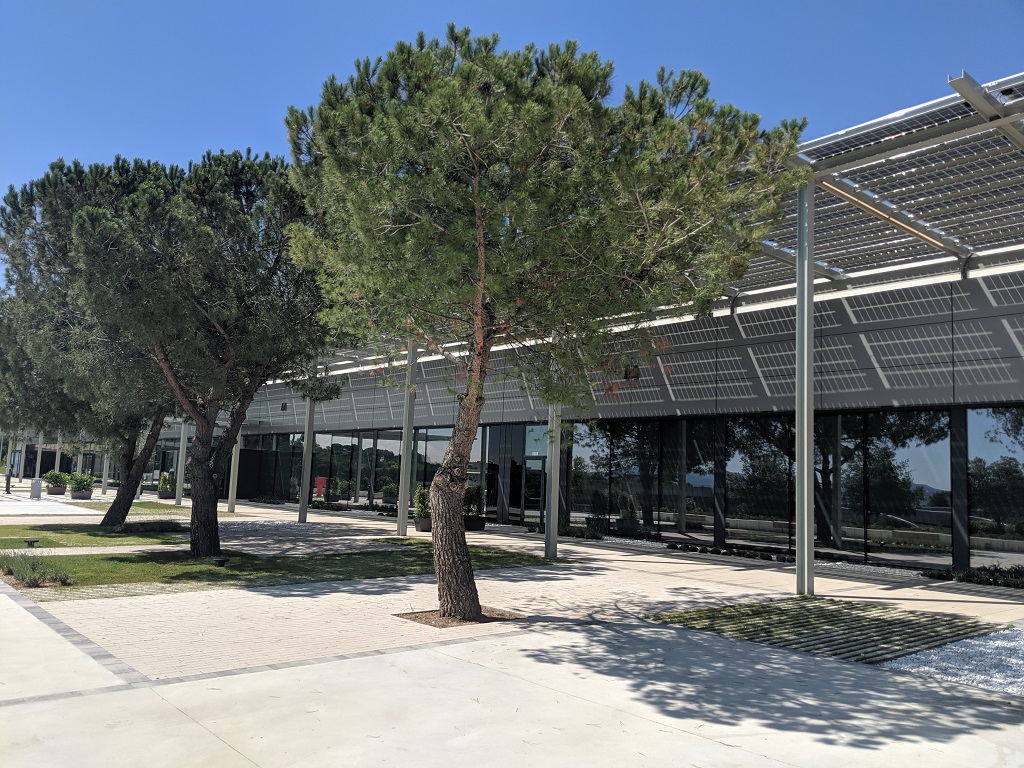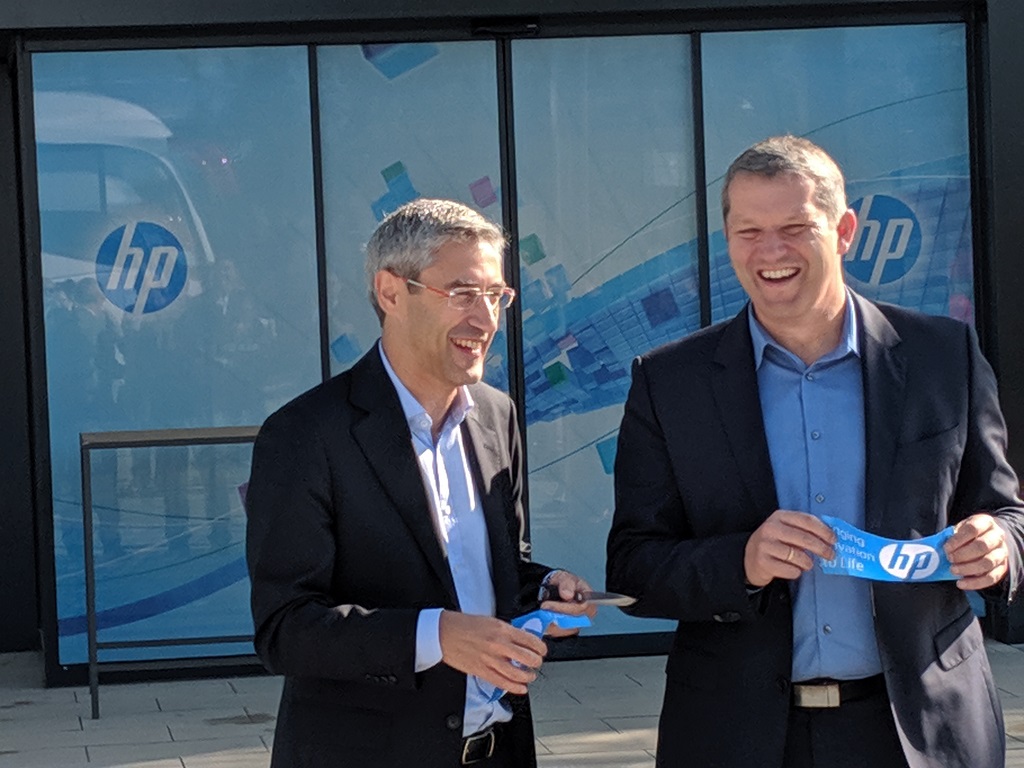
HP’s year-old 3D Printing and Digital Manufacturing Center of Excellence is now Spain’s first building to receive GOLD level LEED certification.
The Center of Excellence (CoE) opened last spring at HP’s extensive site in Sant Cugat del Vallès, just outside Barcelona. I was on-site for the grand opening, and from ribbon cutting through departure sustainability was among the key themes for the center. From the first, the CoE was designed with a goal fitting this theme: achieving a Leadership in Energy and Environmental Design (LEED) Certification.
The focus on sustainability is only growing in additive manufacturing, as the technology is uniquely suited to produce less waste, offer decentralized production, shorten supply chains, and otherwise work toward a more eco-conscious future for manufacturing. With its Multi Jet Fusion and Metal Jet solutions, HP has been driving toward a full workflow of prototyping to production sustainability in 3D printing.
A year on, a key milestone has happened for the CoE: “the GOLD level of LEEDv4 BD+C:NC—a special honor specifically designated for new construction projects.”
To better understand the sustainability angle for this site, and this business, I turned with a few questions to Ramon Pastor, Interim President, 3D Printing and Digital Manufacturing, HP Inc.

Sarah Goehrke (SG): Why has LEED certification always been a goal for this facility — what makes it important for the 3D Printing and Digital Manufacturing Center of Excellence?
Ramon Pastor (RP): “HP is a purpose driven company and our founders believed we should make the world better than we found it. This remains an important part of our mission to transform the world’s biggest industries through sustainable technological innovation.
The 3D Printing and Digital Manufacturing Center of Excellence in Barcelona, unveiled just one year ago, is not only a lighthouse of innovation but also of sustainability. It features eco-friendly construction materials including a photovoltaic canopy delivering 110kW of power, rainwater reuse for irrigation and sanitary purposes, and HVAC and natural light optimization. In fact, the efficient design of the center has reduced electricity consumption by 27%, heating consumption by 72%, and air conditioning by 39% in just its first year of use.
As a result of this innovative work, I was thrilled to see that the HP 3D Printing & Digital Manufacturing Center of Excellence was awarded LEED Gold Certification in recognition of its leadership in Energy and Environmental Design. I’m also excited to share that it is the very first building in Spain to achieve the GOLD level of LEEDv4 BD+C:NC – this is a special honor specifically designated for new construction projects.”
SG: How does this type of sustainability effort fit in with the business of digital manufacturing?
RP: “The 3D Printing and Digital Manufacturing Center of Excellence embodies our mission to transform the world’s biggest industries through sustainable technological innovation. With the addition of the 3+ acre facility at HP’s Barcelona campus, we were able to bring HP engineering and R&D groups under one roof and provide a large-scale factory environment to collaborate with customers and partners on the digital manufacturing technologies revolutionizing their industries.
With this type of state of the art facility, HP can continue to explore and bring to life the vast sustainability benefits of 3D printing, which include helping to reduce the amount of materials used, shortening and simplifying traditional supply chains, better matching of supply and demand, as well as improving service options that can prolong the life of products. As one of the largest 3D printing and digital manufacturing research and development facilities in the world, HP is able to increase collaboration and accelerate innovation within the industry.
One of the main focus areas of our R&D lab is the development of new innovative applications and sustainable materials. We’re excited to have the opportunity to work with partners like BASF on material development out of our Barcelona Center of Excellence, and most recently announced the new HP 3D High Reusability PP which enables the 100% reuse of collected surplus powder, leading to less waste and more efficient production.”
SG: How does LEED certification affect the costs of running a manufacturing facility?
RP: “Becoming a LEED Certified building has many advantages, including increased building efficiency and decreased operational costs from energy, water, waste, and maintenance savings. For our building, HP is expecting an 8 MkWh annual reduction of the energy consumption, equivalent to 27% of the building consumption.”
SG: How has the team worked toward environmental goals? What work lies ahead?
RP: “We are proud to have reached our goal in just one year after the grand opening of the center. Over the last year, the team has been dedicated to helping HP reduce its environmental footprint and worked to reduce our electricity consumption by 27%. A few of the key design features of the building which aided in this reduction are:
- Optimization of the consumption HVAC Systems and Core & Shell thermal isolation.
- Designed roof measures using high reflectance roof materials to minimize effects on microclimates and human and wildlife habitats by reducing heat islands
- Interior natural light provided by a pattern of skylights with automatic adjustment according the solar level
- Photovoltaic Canopy to provide 110kW – 3% of the total power capacity
- Rainwater reuse for irrigation and sanitary purposes
- Sustainable landscaping and parking areas
- Construction materials low emotive and sustainable production
And as we move forward, our goal is to continue to drive progress towards a more efficient, circular, and low-carbon economy. Through HP’s 3D printing portfolio, we’ll continue to bring to market innovative materials and sustainable solutions that will reduce our impact on the environment. We are excited to have a large community of partners and customers on this journey with us as we continue to accelerate the shift to digital manufacturing and build a more sustainable future.”
Via HP
